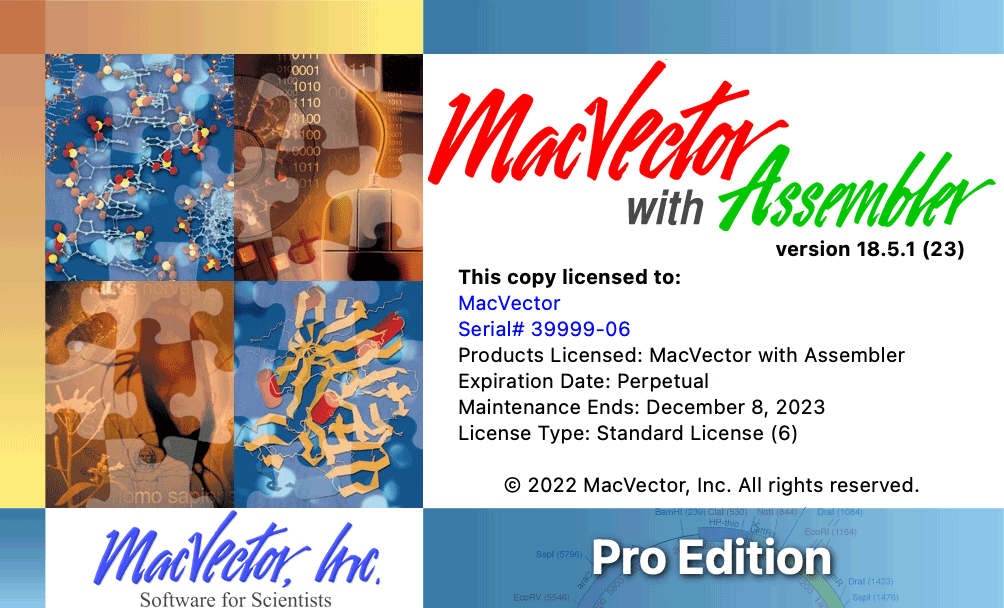Which installer do I need?
The latest version of MacVector that you can run is determined by the maintenance end date of your license. You can find this by running MacVector and choosing the MacVector | About MacVector menu item;

Typically, the maintenance end date is set to 12 months after the last time that you or your institution last purchased MacVector, an upgrade, or renewed a yearly maintenance contract. If you believe the displayed date is incorrect, please check that you entered the most recent activation code sent from support@macvector.com.
Next, look in the table below and find the most recent installer that your license can run:
| If the maintenance end date is more recent than this date | Use this Version | Direct link to installer | Release Notes |
| 1st May 2025 | MacVector 18.8 | MacVector 18.8 | MacVector 18.8.0 |
| 1st June 2024 | MacVector 18.7.8 | MacVector 18.7.8 | MacVector 18.7.8 |
| 1st July 2023 | MacVector 18.6.4 | MacVector 18.6.4 | MacVector 18.6.4 |
| 1st November 2022 | MacVector 18.5.1 | MacVector 18.5.1 | MacVector 18.5.1 |
| 1st August 2021 | MacVector 18.2.5 | MacVector 18.2.5 | MacVector 18.2.5 |
| 1st February 2021 | MacVector 18.1.5 | MacVector 18.1.5 | MacVector 18.1.5 |
| 1st December 2020 | MacVector 18.0.1 | MacVector 18.0.1 | MacVector 18.0.2 |
| 1st February 2020 | MacVector 17.5.4 | MacVector 17.5.4 | MacVector 17.5.4 |
| 1st November 2018 | MacVector 17.0.10 | MacVector 17.0.10 | MacVector 17.0.1 |
| 1st September 2017 | MacVector 16.0.10 | MacVector 16.0.10 | MacVector 16.0.1 |
| 1st February 2017 | MacVector 15.5.4 | MacVector 15.5.4 | MacVector 15.5.4 |
| 1st August 2016 | MacVector 15.1.5 | MacVector 15.1.5 | MacVector 15.1.5 |
| 1st June 2016 | MacVector 15.0.2 | MacVector 15.0.2 | MacVector 15.0.2 |
Installers for older versions
Contact MacVector Support if you need an installer for MacVector 14.5 or earlier versions.
